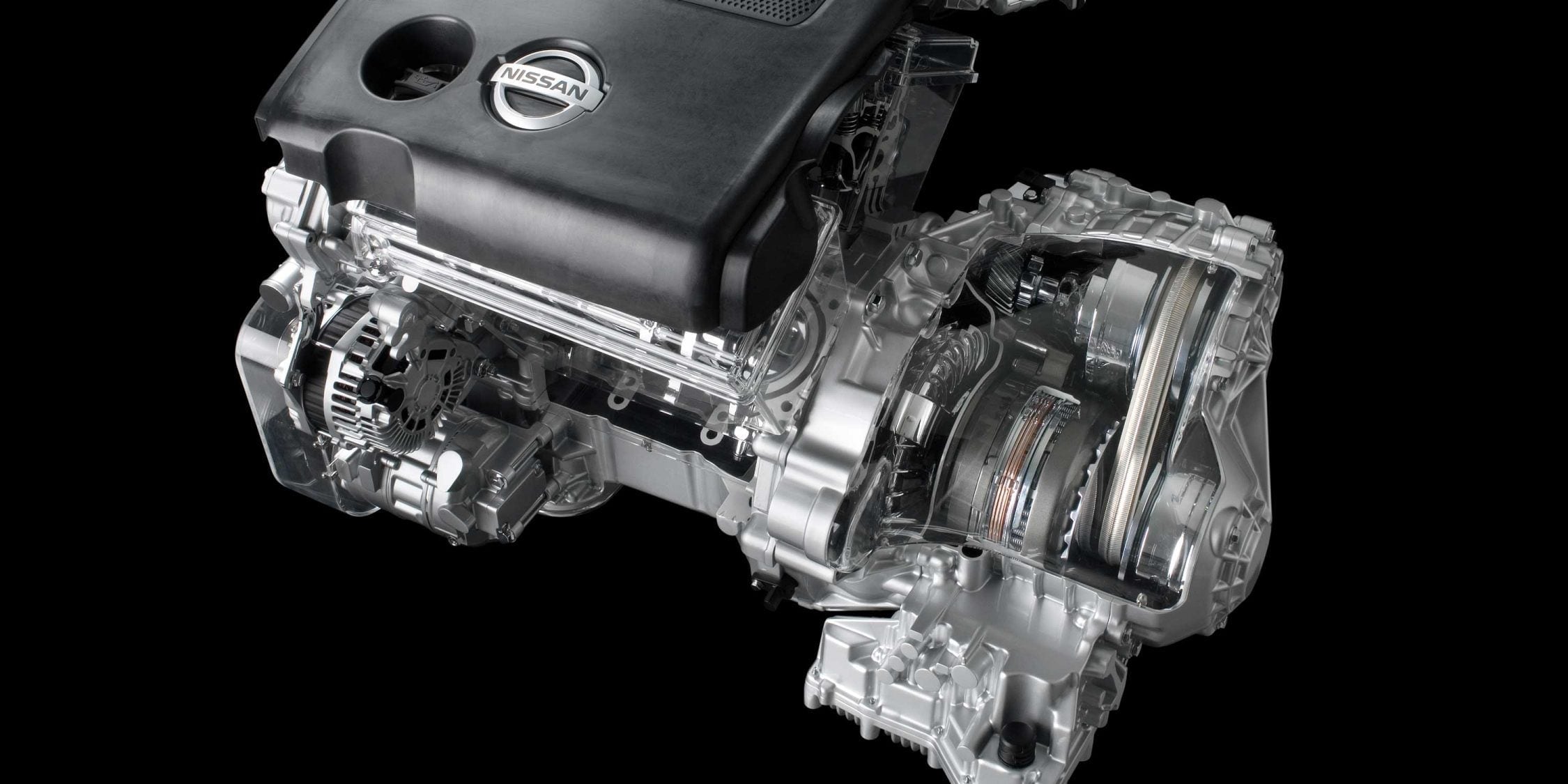
When CVT transmissions first started becoming more common at the beginning of the 21st century, they weren’t nearly as refined and reliable as they are today. Developed to increase fuel efficiency and a smooth acceleration feel, CVTs replaced traditional automatic transmissions in many compact economy cars. Unfortunately, however, early CVT transmissions developed the reputation of being rather problematic.
Through decades of advancement and innovation, engineers have worked tirelessly to change this narrative. CVTs may have been scarce in the industry a decade ago, but today they are quickly becoming the norm—especially at Nissan.
Conventional Automatic Transmission
CVTs provide an infinite number of gear ratios without using a set of fixed planetary gears. This is far different than conventional automatic transmissions that offer only a fixed number of gears—such as the Nissan Titan’s nine-speed unit.
In the Titan, a torque converter connects the engine to the transmission and uses pressurized fluid to transfer power from the engine to the transmission input shaft. Internally, a vortex power rotation is created that spins the turbine of the torque converter and the central shaft. This power generated from the rotating central shaft is then transmitted to the planetary gears—which creates all of the different fixed gear ratios this transmission can produce. In this particular application, there are nine forward gears and one reverse gear—each with their own ratio.
How Nissan’s XTRONIC CVT Transmission is Different
Compared to a conventional automatic transmission that is filled with intricate interlocking toothed wheels, brakes, clutches, and torque converter components—the CVT is rather simplistic in comparison with far less moving parts overall.
This results in less internal friction and heat, two factors that cause wear and tear on internal transmission components. According to HowStuffWorks, most CVTs have only three basic components—a high-strength steel belt or chain, a variable input driving pulley and an output driven pulley. This pulley system is used to direct power to the wheels.
In Nissan’s XTRONIC CVT transmission, shift-shock is eliminated altogether as there is no actual “shifting” that occurs. Instead, the steel belt and pulley system moves up and down the gear ratio in a continuous, smooth motion. The shifting feels seamless in comparison. Whereas you can often feel traditional automatic transmissions “hunting” for the correct gear while climbing a hill, CVT transmissions do not experience that sensation.
Nissan’s XTRONIC CVT essentially creates its own custom gear ratio as you drive with an infinite number of possibilities to choose from. Nissan’s D-Step Logic Control uses data including vehicle speed, accelerator pedal position and application speed to determine this ideal gear ratio. This means that the engine will always be in its ideal power band—resulting in improved fuel efficiency and more rapid and seamless acceleration.
Vehicles Featuring Nissan’s XTRONIC CVT Transmission
The XTRONIC CVT is available on many popular Nissan sedans, such as the Versa, Sentra, Altima and Maxima, as well as crossovers and SUVs like the Kicks, Rogue, Rogue Sport, Murano and Pathfinder. Every Nissan XTRONIC CVT comes with a 5 year, 60,000-mile warranty (whichever comes first).